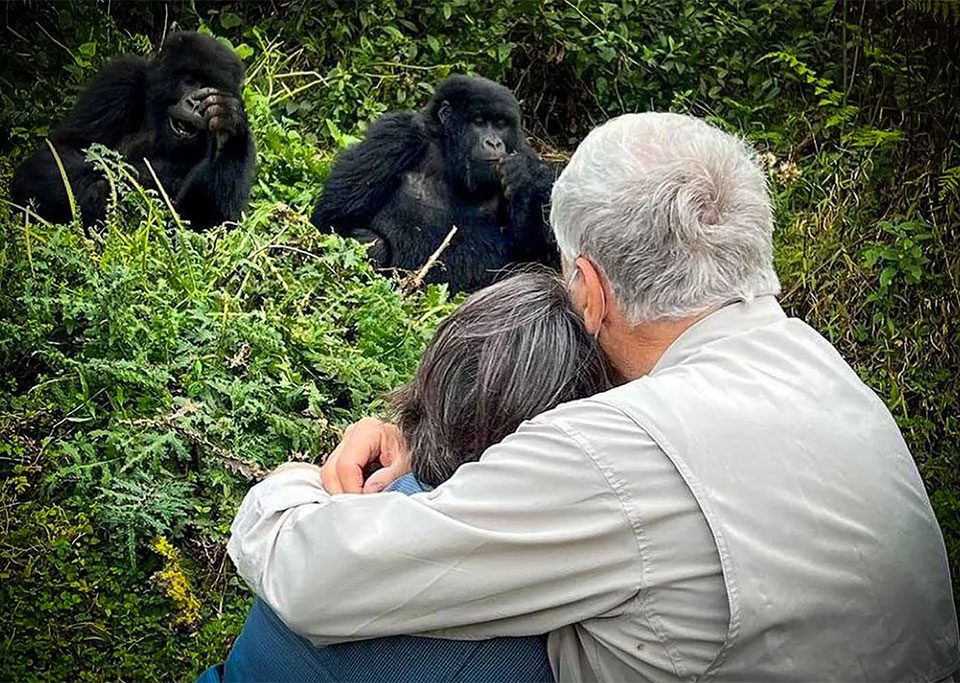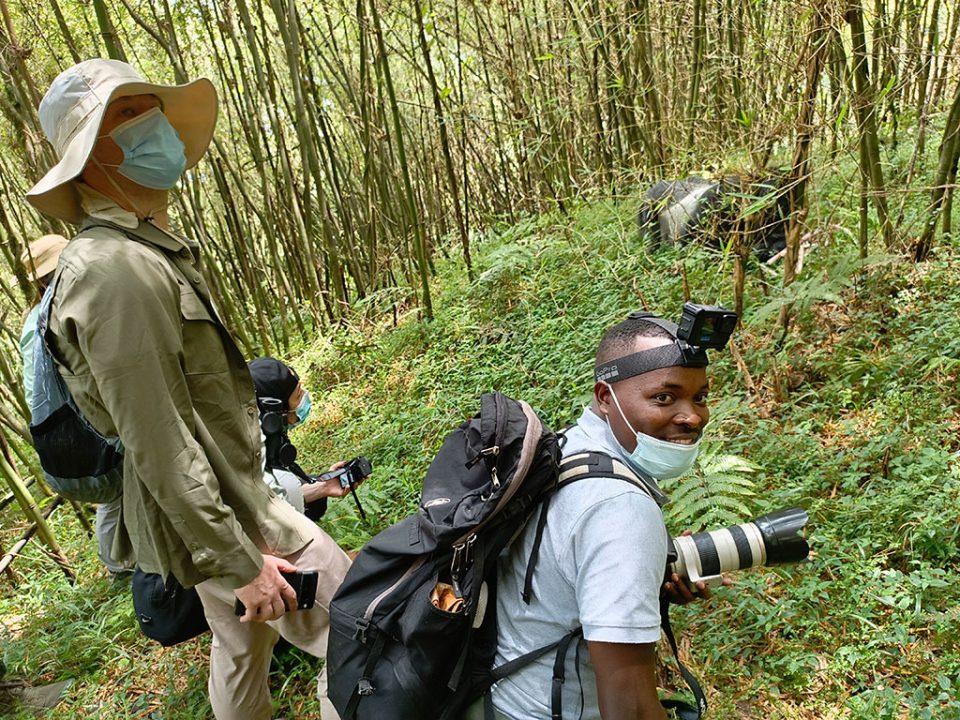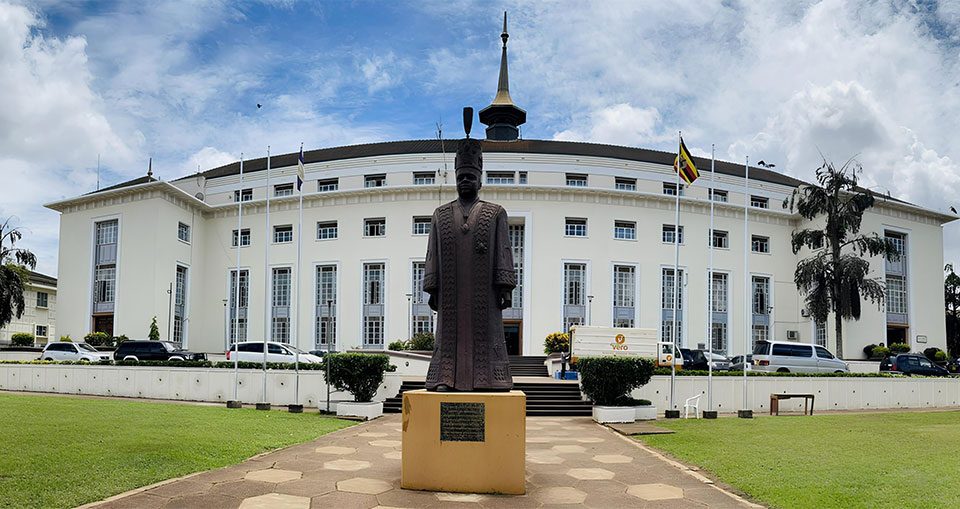- EXPERT'S HELP
- +256789210067
- +256200955001
- info@kenlinktours.com
How easy is it to trek gorillas in Uganda
How easy is it to trek gorillas in Uganda. Gorilla trekking in Uganda is one of the most thrilling wildlife adventures in Africa. The chance to stand a few meters away from the mighty mountain gorillas—our close relatives—creates a profound connection with nature that words can hardly capture. But one question most travelers ask before booking their trip is, “How easy is it to trek gorillas in Uganda?”
The answer depends on several factors, including your physical fitness, the gorilla family you’re assigned to track, and the region where you trek. This blog explores everything you need to know about the difficulty level of gorilla trekking in Uganda and how to prepare for a successful and enjoyable experience.
Understanding Gorilla Trekking in Uganda
Uganda is home to almost half of the world’s remaining mountain gorillas. These gentle giants live in two main destinations: Bwindi Impenetrable National Park and Mgahinga Gorilla National Park, both located in the southwestern part of the country.
Bwindi Impenetrable National Park has more than 20 habituated gorilla families spread across four sectors: Buhoma, Ruhija, Rushaga, and Nkuringo.
Mgahinga Gorilla National Park, though smaller, offers equally rewarding experiences with one habituated family known as Nyakagezi.
Each trek begins early in the morning with a briefing at the park headquarters, where you are assigned to a gorilla family group. Rangers and guides then lead small groups (of up to 8 trekkers) into the dense forest to find the gorillas.
How Strenuous Is Gorilla Trekking?
The level of difficulty varies from easy to challenging depending on several factors:
1. Terrain and Altitude
Bwindi’s landscape is rugged and mountainous, with altitudes ranging from 1,160 to 2,607 meters above sea level. The park’s name—“Impenetrable”—gives you an idea of what to expect: thick vegetation, steep slopes, and tangled vines.
Mgahinga, part of the Virunga Volcanoes, also features steep climbs, but the terrain can be more open in some areas.
If you’re trekking a gorilla family located near the trailhead, your hike could take as little as 30 minutes to 2 hours. However, if the gorillas move deeper into the forest, the trek may last 4 to 8 hours or even longer.
2. Physical Fitness
You don’t have to be an athlete to trek gorillas, but moderate physical fitness helps a lot. Anyone who enjoys nature walks and can handle hiking for several hours on uneven ground will likely manage well.
If you’re not used to hiking, a few weeks of preparation—like walking, light jogging, or stair climbing—will greatly improve your experience.
3. Gorilla Group Allocation
During the pre-trek briefing, park officials usually consider your age, fitness, and preferences when assigning groups. Elderly or less fit visitors are often given gorilla families that are easier to reach, while those who want more adventure may be assigned to families deeper in the forest.
4. Weather Conditions
The weather in Uganda’s gorilla parks can change quickly. Rain can make trails slippery and muddy, increasing the difficulty level. Trekking in the dry seasons (June–September and December–February) is generally easier, but even then, occasional showers are common.
Preparing for the Trek
1. What to Pack
Proper gear makes the trek much more manageable. Here’s what you should bring:
Sturdy hiking boots with good ankle support.
Rain jacket or poncho, since rain is always possible.
Gloves for gripping vines and branches.
Long-sleeved shirts and pants to protect against scratches and insects.
Walking stick (usually provided by the park or local porters).
Packed lunch and plenty of water.
2. Hiring a Porter
Even if you’re fit, hiring a porter is highly recommended. For a small fee (usually around $15–20 USD), a porter carries your backpack, helps you navigate steep areas, and provides a steady hand when needed. This not only makes your trek easier but also supports the local community.
3. Mental Preparation
Gorilla trekking is unpredictable. Sometimes you find the gorillas within an hour; other times it takes longer. Go in with an open mind and a spirit of adventure—every step through the forest brings you closer to nature.
The Trekking Experience
After the morning briefing, you set off with your ranger guide and trackers. The guides are experienced and knowledgeable about the terrain and gorilla behavior. Along the way, you’ll hear the sounds of birds, insects, and rustling leaves—a true immersion in the rainforest environment.
Trackers move ahead to locate the gorillas and communicate their position via radio. Once the gorillas are found, the excitement builds. You leave your belongings a short distance away and approach the group quietly, maintaining a respectful distance of about 7 meters.
You’ll then spend one magical hour observing them. Watching a silverback guard his family, juveniles playing, and mothers nursing their babies is an unforgettable moment. The fatigue from the hike disappears instantly.
How Rangers Make Trekking Easier
Uganda Wildlife Authority (UWA) guides and rangers are incredibly skilled. They make sure everyone in the group feels safe and comfortable throughout the trek. If someone struggles, they adjust the pace or even arrange for porters to assist further.
Some gorilla families are intentionally assigned closer to park entrances for older or less fit visitors, making it accessible to almost anyone who wants the experience.
Is Gorilla Trekking Safe?
Yes, gorilla trekking in Uganda is very safe. The gorillas you visit are habituated, meaning they are used to human presence. Rangers accompany every group and carry communication devices for emergencies.
You’ll also receive a short briefing on safety rules—like not touching the gorillas, avoiding direct eye contact for too long, and keeping your voice low.
As long as you follow instructions, you’ll be perfectly fine and enjoy every moment.
Best Time to Trek Gorillas in Uganda
Gorilla trekking is possible year-round, but the dry seasons—June to September and December to February—are the most popular times. Trails are less slippery, and visibility is better.
However, the wet seasons (March to May and October to November) have their charm too. The forest is lush and green, there are fewer tourists, and lodges sometimes offer discounted rates.
How Easy Is It Really to see Gorillas?
In reality, gorilla trekking in Uganda is moderately challenging but very manageable for most people. The level of difficulty depends largely on your fitness, weather conditions, and the gorilla family’s location that day.
What truly matters is your mindset. If you come prepared, physically and mentally, and embrace the adventure, the trek becomes a deeply rewarding experience rather than a struggle.
Standing face-to-face with a mountain gorilla family is one of Africa’s most profound wildlife encounters—a life-changing moment that’s well worth every step.
So yes, gorilla trekking in Uganda is not only possible for most travelers—it’s one of the most accessible and unforgettable adventures on the continent.
Booking Gorilla Tre Safaris with Kenlink Tours
Embark on a once-in-a-lifetime gorilla trekking adventure with Kenlink Tours, your trusted travel partner in Uganda and Rwanda. Our expert guides, comfortable vehicles, and well-planned itineraries ensure a memorable experience in the heart of Africa’s rainforests. Whether you wish to trek mountain gorillas in Bwindi Impenetrable National Park or Volcanoes National Park, we customize safaris to fit your schedule and budget. Enjoy seamless booking, professional service, and unforgettable wildlife encounters with Kenlink Tours.
📩 Book your gorilla trek today: info@kenlinktours.com

Request for a Quote
Start planning your adventure trip today with a professional expert available to help you 24/7. Encounter Africa on your own terms.
Request a QuoteDISCOUNTED GORILLA SAFARIS IN UGANDA




Gorilla Trekking Adventures
Embark on a fascinating gorilla trekking safari in Uganda and Rwanda with Kenlink Tours. Witness majestic mountain gorillas up close in their natural habitat, guided by experts for a once-in-a-lifetime adventure through lush rainforests and scenic landscapes.
READ MOREWildlife Encounter Safaris
Embark on iconic wildlife safaris in East Africa with Kenlink Tours. Discover the Big Five in vast savannahs, witness the Great Migration, and explore pristine national parks. Our expertly guided adventures promise unforgettable encounters with nature, rich cultural experiences, and seamless travel across Uganda, Kenya, Tanzania, and Rwanda.
READ MOREOther Safaris you may Love











